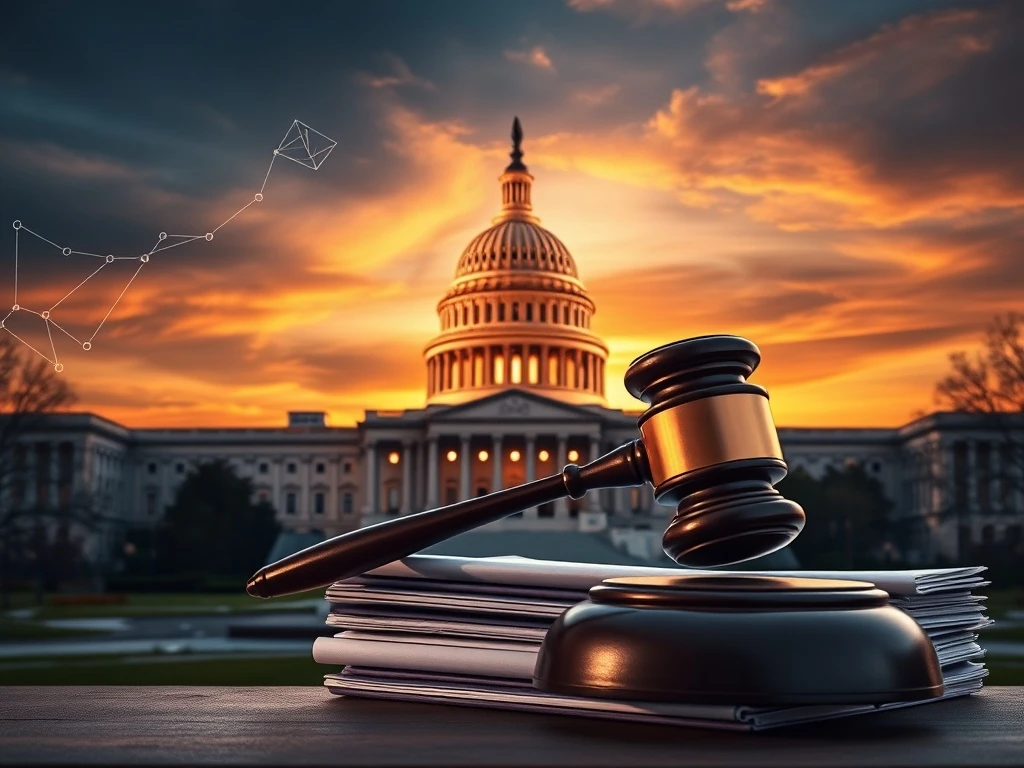CLARITY Act: The Crucial Bill for US Crypto Regulation in 2025

The landscape of digital assets in the United States is at a crossroads. For years, the crypto industry has yearned for clear rules, and now, a pivotal piece of legislation, the CLARITY Act, stands ready to deliver. While no bill is without its imperfections, the Digital Asset Market Clarity Act of 2025 presents a compelling opportunity for the US to solidify its position as a global leader in the evolving world of digital assets. As Congress faces the urgency of this summer’s legislative session, understanding the profound impact of this bill is paramount for anyone invested in the future of finance and technology.
Why the CLARITY Act is Our Best Bet for US Crypto Regulation
For too long, the US crypto market has operated under a cloud of regulatory uncertainty. Since at least 2019, Congress has sought to address the complex problem of crypto market structure, but a ‘perfect’ solution has remained elusive. The truth is, waiting for perfection is no longer an option. What the US desperately needs is a regulatory regime that significantly improves upon the existing status quo, and the CLARITY Act fits this description precisely. This legislation is not a hastily conceived proposal; it is the culmination of years of dedicated bicameral and bipartisan policy work. It represents a more refined and robust framework than its previous iterations, signaling a genuine commitment to establishing coherent US crypto regulation. Passing this bill means moving from an ambiguous environment to one with defined boundaries, fostering growth and stability.
Debunking Myths: Is This a Sweetheart Deal for Digital Asset Regulation?
Some critics have suggested that the CLARITY Act is merely an ‘early Christmas gift’ to the crypto industry. This perspective overlooks the significant demands and high standards the bill places on participants. Lawmakers have consistently challenged the crypto industry to embrace meaningful regulation, not just talk about it. Simultaneously, the blockchain sector has advocated for intelligently tailored rules that acknowledge the unique nature of disintermediated computer networks. The CLARITY Act rises to both these challenges. It sets a stringent bar for decentralization and imposes an aggressive timeline for projects to meet these requirements. This outcome is beneficial, pushing the industry toward greater transparency and accountability. While some provisions may cause discomfort within the blockchain community – for instance, the current draft’s limitation on developers facilitating peer-to-peer transactions in commodity futures and derivatives, keeping those markets intermediated – these points of contention underscore that the bill was not drafted solely at the behest of crypto lobbyists. The presence of ‘sour’ elements alongside the ‘sweet’ clearly indicates a balanced, rather than biased, approach to digital asset regulation.
Fuelling Blockchain Innovation in the United States
The passage of the CLARITY Act promises to usher in a new era for blockchain innovation within the United States. By providing clear, durable rules that software developers can readily understand, the bill creates a defined pathway for responsible innovation. This clarity is a powerful magnet for talent and capital. When innovators know the rules of the game, they are incentivized to build within those parameters, rather than seeking more permissive environments abroad. The Act encourages a shift from opaque intermediaries to open computer networks, promoting fairer, more transparent, and secure markets. Blockchain innovators who adapt to these new standards will thrive, while those who cannot will face traditional regulatory scrutiny. This legislative clarity will attract a new wave of innovation to the US, rather than seeing it flow to international competitors, thereby propelling America ahead on the global stage of technological advancement.
Strengthening Our Crypto Market Structure for the Future
One of the most compelling arguments for the CLARITY Act comes from its potential to bolster the effectiveness of investor protection agencies like the SEC and CFTC. Currently, these agencies face the unenviable task of regulating a space fundamentally different from traditional markets, all while knowing the statutory landscape is destined to change. They are, in essence, operating with a ‘hand tied behind their back and blindfolded.’ The CLARITY Act directly addresses this challenge. It mandates that regulators collaborate to establish a durable regulatory framework that acknowledges the unique characteristics of blockchain technology. This framework is designed to ensure market integrity and robust investor protection while simultaneously providing the necessary space for innovation to flourish. By defining roles and responsibilities more clearly, the Act strengthens the foundational crypto market structure, enabling regulators to perform their duties more effectively and proactively.
The Urgent Call to Action: Why Summer 2025 is Critical
The legislative clock is ticking. The House is anticipated to vote on the CLARITY Act this week, with strong expectations of its passage. Following this, the bill moves to the Senate, where its reception, particularly within the Senate Banking Committee, might be more favorable than in the Senate Agriculture Committee. A significant risk looms: if Congress attempts to start from scratch on a new bill, precious time will be lost, making it difficult to finalize meaningful legislation in 2025. To cross the finish line and establish a functional market structure, embracing the existing framework of the CLARITY Act is the most pragmatic and efficient path forward. While no bill is perfect, and some provisions may be less than ideal, the achievement of finally establishing a clear regulatory environment for digital assets is worth pursuing this more achievable route.
A Watershed Moment for American Leadership
The congressional passage of the CLARITY Act this year would mark a watershed moment for the blockchain industry, consumers, and US innovation at large. Whatever form the final bill takes when it reaches the Resolute Desk for signature, it will undoubtedly represent a substantial improvement over the current regulatory vacuum. It will signal the dawn of a new era of American technological leadership, fostering an environment where a new generation of builders can innovate responsibly and confidently. This legislation is not just about rules; it is about providing the foundation for future growth and ensuring the United States remains at the forefront of the digital revolution.







